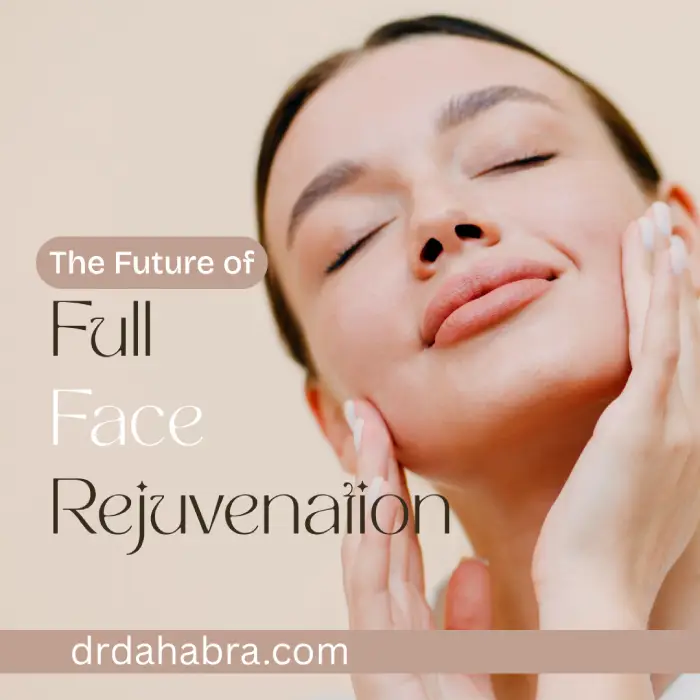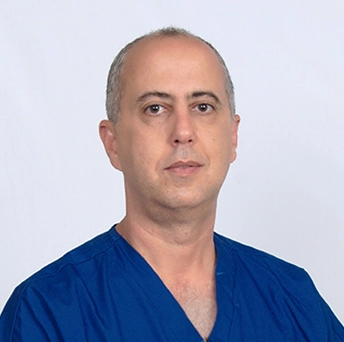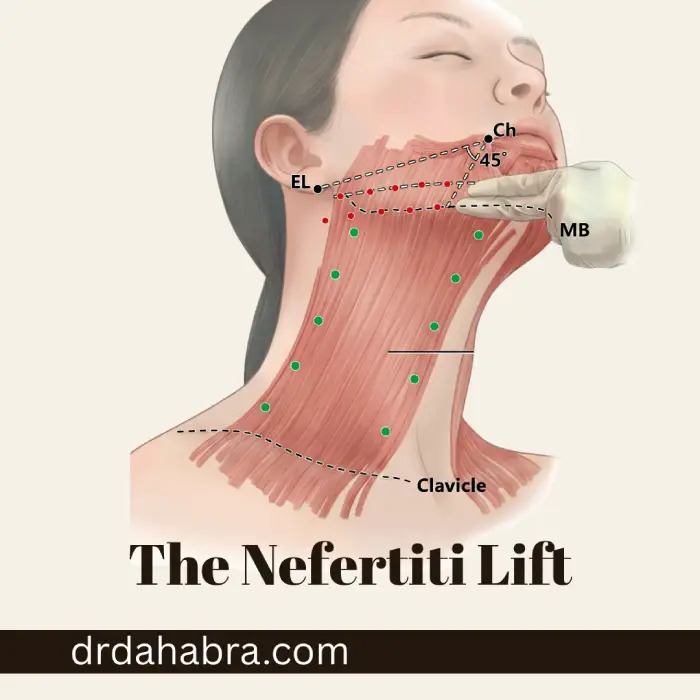The Future of Full-Face Rejuvenation: Unlocking Natural, Long-Lasting Transformation
Why is full-face rejuvenation considered the future of aesthetics?
The Future of Full-Face Rejuvenation is here. This article discusses the future of full-face rejuvenation.
Explore 2026’s top trends: minimally invasive procedures, regenerative medicine (stem cells, exosomes), and personalized combination therapies for natural, harmonious results. The shift toward full-face rejuvenation reflects a more profound understanding that aging doesn’t occur in isolated zones (e.g., cheeks, brow, jawline) but across the entire facial canvas.
A truly modern, future full-face rejuvenation philosophy emphasizes comprehensive facial treatment plan design over piecemeal “spot fixes.
In the coming years, the paradigm will shift even further toward complete facial harmonization techniques, combining surgical and non-surgical approaches to achieve a balanced result. Rather than chasing dramatic correction in one area, skilled practitioners will aim for gradual rebalancing of structure, volume, skin quality, and tissue support.
Patients will demand natural-looking facial results over exaggerated or overfilled appearances, making the holistic approach essential.
Moreover, new anti-aging technologies, including AI-assisted facial treatments, predictive modeling, and regenerative aesthetic medicine, enable providers to plan more comprehensive yet gentle interventions.
The “future full-face rejuvenation” isn’t about one dramatic transformation; it’s about the sustainable, graceful evolution of the face over time, blending artistry, science, and patient preference.
Table of Contents
1. How does a holistic approach to full-face rejuvenation integrate multiple modalities?
2. What are the advanced surgical techniques, and how do deep plane facelifts offer advantages?
3. How are RF and ultrasound technologies evolving in skin tightening and lift?
4. What role does laser resurfacing play in the next generation of facial rejuvenation?
5. How does exosome therapy work, and what is its promise (and limits) in skin rejuvenation?
6. How will personalized treatment plans using AI and 3D imaging shape full-face rejuvenation?
7. What are preventative and biostimulatory treatments, and how do they differ from traditional injectables?
8. How is the trend toward natural results / subtle enhancements reshaping full-face aesthetics?
9. How does individualized care, recognizing unique anatomy and aging patterns, drive better outcomes?
10. How will wellness integration (mental + physical) support healing and result in full-face rejuvenation?
11. What are biostimulatory fillers (e.g., Sculptra, Radiesse), and how do they differ from HA fillers?
12. How is PRP / PRF (platelet-rich plasma/fibrin) being combined with other modalities for synergy?
13. What is regenerative aesthetics, and why is it viewed as a future core of anti-aging?
14. Why is the field moving away from isolated procedures toward comprehensive, combination therapy?
15. Frequently Asked Questions (FAQs)
16. Conclusion
17. References
1. How does a holistic approach integrate multiple modalities?
In future full-face rejuvenation trends, the most effective plans will not hinge on a single procedure but on combination facial rejuvenation therapies tailored to each person’s unique anatomy and aging pattern.
For example, a patient might receive RF microneedling of the entire face, combined with biostimulatory filler techniques and low-level laser resurfacing in a single staged plan. This layering allows each modality to amplify the other; skin tightening devices scaffold a firmer “envelope,” while fillers or fat grafting restore softness and volume.
A holistic plan might address skin, soft tissue, muscle, and even bone. For deeper issues of skeletal descent, micro fat grafting of the face or structural lifting (e.g., deep plane facelift) may be part of the mix, while superficial modalities improve texture and tone.
The key is sequencing: start with tightening, then add volume, and finally refine. This multi-tiered approach helps avoid over-reliance on any one method and spreads risk, downtime, and cost.
In addition, as patients increasingly expect long-lasting rejuvenation results, providers are designing comprehensive facial treatment plans that include maintenance phases, wellness support, and adjustment cycles over the years.
The future is not a one-time fix, but a multi-year journey to achieving sustained facial harmony and balance.
2. What are advanced surgical techniques, and how do deep plane facelifts offer advantages?
Traditional facelifts often focused solely on skin tightening, which can produce tension lines and a “operated” appearance. Deep plane facelift advantages lie in repositioning the deeper soft tissues (muscle, fascia, fat compartments) so that the lift is not purely superficial.
This leads to more natural movement, less distortion, and longer-lasting results. In fact, many surgeons now consider the deep plane a gold standard for surgical full-face rejuvenation.
Moreover, newer versions, such as the hidden-scar face lift technique and vertical deep plane lifts, aim to minimize visible scars and avoid a “windswept” look. The deep plane approach also allows more durable cheek volume restoration and addresses midface sagging more effectively than skin-only lifts.
Though deeper surgery carries more downtime and technical complexity, in future paradigms it may be reserved for select patients who require structural correction or for whom non-surgical paths have diminishing returns. It remains a key pillar in a full-face rejuvenation strategy when combined with non-surgical modalities.
3. How are RF and ultrasound technologies evolving in skin tightening and lift?
Energy-based devices will be central pillars of non-surgical facial trends.
Radiofrequency (RF) skin tightening face technologies, such as fractional RF microneedling and monopolar RF, deliver heat into the dermis and SMAS layers, stimulating collagen and tissue contraction. These modalities can serve as minimally invasive alternatives to facelifts, especially when combined with other therapies.
Ultrasound-based facial rejuvenation, such as Ultherapy, utilizes focused acoustic energy to lift deeper tissue layers (e.g., the fibromuscular layers) without the need for incision. That means a non-surgical lift is possible in the brow, midface, and lower face.
As device precision improves, the ability to sculpt and lift subtly will increase, making them more widely adopted in complete facial plans.
In future practice, RF microneedling of the entire face may become a “baseline” procedure for many patients, forming the collagen matrix over which fillers and regenerative therapies can be built.
As devices refine depth and temperature control, the distinction between non-invasive and mildly invasive procedures will become increasingly blurred, providing operators with greater flexibility in customizing lifts.
4. What role does laser resurfacing play in the next generation of facial rejuvenation?
Fractional laser resurfacing remains a reliable treatment for enhancing skin texture, tone, pigmentation, and fine lines.
The next generation of full-face rejuvenation will utilize advanced laser technologies to achieve deeper penetration, enhanced healing, and reduced downtime. Fractional CO₂, erbium, and hybrid lasers will ablate micro-columns while leaving surrounding tissue intact, accelerating recovery.
These treatments help smooth microrelief, reduce pore size, and refine the outer shell over deeper lifts and fillers. In a comprehensive plan, lasers are often used as a finishing touch after volume and tightening phases, serving to refine the surface quality.
Combining laser resurfacing with regenerative adjuncts, such as applying exosome therapy to the skin or PRP immediately after laser treatment, may accelerate healing and enhance outcomes. This layering synergy is one of the core advances in full-face combination therapy.
5. How does exosome therapy work, and what is its promise (and limits) in skin rejuvenation?
Exosome therapy refers to the use of extracellular vesicles derived from stem cells or platelets to deliver growth factors, microRNAs, and signaling molecules that modulate tissue repair and regeneration.
In aesthetic medicine, exosomes may enhance collagen induction therapy for the face, boost cellular communication, and mitigate inflammation.
Preclinical and early human studies suggest that topical or injected exosomes can improve skin quality, reduce fine lines, and accelerate healing when combined with devices such as microneedling.
However, their real-world adoption is hindered by limited controlled clinical trials, regulatory hurdles, and issues with standardization.
In practical full-face rejuvenation plans, exosomes may serve as adjuncts, applied post-laser or microneedling to accelerate recovery, minimize downtime, and promote collagen formation. But they are unlikely to replace core lifting or volumizing methods at this stage.
6. How will personalized treatment plans using AI and 3D imaging shape full-face rejuvenation?
In the future, every patient will undergo a personalized full-face assessment, powered by AI and 3D imaging.
These systems can simulate facial aging progression, overlay volumetric maps, and predict the effect of different interventions. This enables clinicians to build highly individualized plans, selecting combinations of RF, filler, laser, or surgical lifts tailored to each patient’s unique facial features.
AI-assisted facial treatments are already informing procedural planning and optimizing energy delivery. Surgeons and injectors can use predictive analytics to anticipate tissue response or risk of overtreatment. This reduces guesswork.
Over time, AI algorithms may even track patients’ outcomes longitudinally, proposing micro-adjustments or maintenance therapy before suboptimal changes emerge. The result is a dynamic, adaptive roadmap for full-face rejuvenation, rather than a static plan.
7. What are preventative and biostimulatory treatments, and how do they differ from traditional injectables?
Traditional HA (hyaluronic acid) fillers primarily provide volume via immediate filling.
In contrast, biostimulatory injectables, such as Sculptra or Radiesse, stimulate the body’s own collagen over time. This means gradual, natural improvement rather than an instant “fill.”
Preventative mini facelift benefits are rooted in starting subtle treatments earlier, such as mild neuromodulators or microdoses of biostimulatory agents, to slow the onset of deeper facial descent. This trend is gaining popularity, particularly among younger patients who want to “age more gracefully.”
By combining early biostimulatory filler techniques with skin tightening devices, practitioners can delay or reduce the need for more invasive lifts. The “less is more” philosophy underpins this progression, focusing on maintaining youthful facial volume and skin quality over the decades rather than pursuing aggressive correction.
8. How is the trend toward natural results / subtle enhancements reshaping full-face aesthetics?
The era of overfilled faces and heavy surgical lifts is waning.
The aesthetic zeitgeist now favors a “natural look”, where treatments are discreet, harmonizing, and preserve expressiveness. This shift is a cornerstone of full-face rejuvenation trends.
Techniques like complete facial harmonization, where fillers, energy devices, and soft lifts are carefully balanced, are replacing “fix one zone” thinking. Volume is restored subtly, with an emphasis on facial harmony and balance rather than isolated bulges.
The goal is a refreshed version of yourself, not someone else’s ideal.
Injectors skilled in natural-looking facial fillers will be in high demand. They know how to avoid overcorrection, layering effect, or puffy appearances by respecting underlying anatomy, vascular patterns, and proportions.
9. How does individualized care, recognizing unique anatomy and aging patterns, drive better outcomes?
No two faces age the same.
Factors such as bone structure, fat distribution, skin thickness, prior volume loss, sun damage, and genetics all contribute to the development of cellulite. Thus, individualized care is critical: a one-size-fits-all protocol won’t deliver optimal, natural-looking results.
In the future, personalized full-face assessments will identify which compartments need lift, which need volume, and which need skin renewal. Some patients may require hidden scar face lift techniques; others might respond best to non-surgical modalities.
The plan is not preset; it is sculpted around the client.
Recognizing individual aging patterns also helps avoid over-treatment in less needy zones. By maintaining structural integrity where possible and focusing on deteriorated areas, a more balanced, sustainable, and discreet outcome is achieved.
10. How will wellness integration (mental + physical) support healing and result in full-face rejuvenation?
The cutting-edge future will marry medical aesthetics with holistic wellness.
Mental stress, sleep quality, nutrition, and systemic inflammation all influence healing and collagen synthesis. Integrating wellness protocols, such as meditation, breathing techniques, lymphatic massage, and dietary support, can enhance recovery and prolong the results.
Particularly after multi-modality treatments, optimizing systemic health (e.g., limiting oxidative stress, maintaining hormone balance, and ensuring hydration) helps the tissues respond more robustly. In many clinics, post-procedure wellness protocols (e.g., light movement, sleep hygiene, topical antioxidants) will become standard.
In this way, rejuvenation is not just skin-deep. Embracing mind-body integration helps patients feel better internally, which often translates to better external outcomes.
It also aligns with the broader trend of aesthetic medicine shifting from “fixing” to “supporting” the body’s regenerative capacity.
11. What are biostimulatory fillers (like Sculptra and Radiesse), and how do they differ from traditional HA fillers?
Biostimulatory fillers, such as Sculptra (poly-L-lactic acid) and Radiesse (calcium hydroxylapatite), work by triggering a controlled inflammatory response that promotes the formation of new collagen over several weeks to months. Rather than instant volume, you get gradual, natural-looking structural improvement.
In contrast, traditional HA fillers primarily act via hydrophilic volume, immediately adding fullness. While efficient, they carry more risk of overfilling or migration.
Biostimulatory injectables focus on achieving long-lasting facial volume and a more durable rejuvenation.
In full-face combination therapy, biostimulatory fillers can be layered beneath or alongside HA fillers. The HA provides immediate shape, while the biostimulatory agent “locks in” support over time.
Over successive sessions, fewer HA touch-ups may be needed.
12. How is PRP / PRF (platelet-rich plasma/fibrin) being combined with other modalities for synergy?
PRP/PRF harnesses the patient’s own platelets, rich in growth factors, to support healing and regeneration. When used in conjunction with microneedling, lasers, or RF, PRP/PRF can amplify collagen induction, enhance vascularization, and minimize downtime.
Many modern protocols layer PRP immediately after ablation or microneedling to accelerate recovery and deepen the effect. In combination with exosome therapy, PRP can help “prime” the tissue environment for more effective signaling.
Because PRP is autologous, it has a favorable safety profile. As more practitioners adopt full-face combination therapy, combining PRP, laser, RF, and fillers becomes a standard approach to harness synergy, rather than relying on a single method.
13. What is regenerative aesthetics, and why is it viewed as a future core of anti-aging?
Regenerative aesthetics centers on harnessing the body’s innate repair systems, stem cells, exosomes, and growth factors, and combining them with energy devices and scaffolding to rejuvenate tissue, rather than merely covering defects. It looks to restore function, not just appearance.
Because regenerative techniques can improve vascularity, collagen architecture, and cellular vitality, they offer the promise of deeper, more durable results than traditional cosmetics alone. Over time, these methods may slow the pace of aging itself.
The most successful future full-face rejuvenation strategies will likely be hybrids, utilizing surgical lifts or structural fillers where needed, but incorporating regenerative modules (e.g., exosome therapy, stem cell–derived scaffolds) as core components. This is the convergence point of aesthetics and tissue science.
14. Why is the field moving away from isolated procedures toward comprehensive combination therapy?
Aging is a multifactorial process; skin laxity, volume loss, texture decline, bone remodeling, and muscular descent all interact.
No single tool can fully reverse all aspects of the problem. Therefore, the future lies in full-face combination therapy, where modalities are layered intelligently.
Single procedures often reach a plateau, leaving patients to address residual issues. However, layering, e.g., RF, filler, laser, and wellness support, allows each method to tackle a different dimension.
This leads to better synergy, smoother transitions, and fewer surprises.
Additionally, by integrating multiple modalities, providers can tailor downtime, budget, and risk more flexibly. For instance, a patient may choose a non-surgical baseline and “upgrade” to a mini-lift later if needed.
This evolution path is more patient-centered and resilient than one-off procedures.
15. Frequently Asked Questions (FAQs) about The Future of Full-Face Rejuvenation
Q1. What is a full-face rejuvenation?
Concise Answer: A full-face rejuvenation is a comprehensive strategy that addresses all layers of aging across the face, skin, volume, lift, and support, rather than targeting a single zone.
Detailed Answer: Unlike isolated treatments (e.g., just under the eyes or on the cheeks), full-face rejuvenation considers the entire face as an integrated unit. The objective is to restore harmony, proportion, and youth by combining modalities such as skin tightening, volumizing fillers, fat grafting, laser resurfacing, and even surgical lift techniques when necessary.
This holistic approach seeks to correct aging across multiple planes, surface, subdermis, musculature, and structural support, and thus delivers more natural-looking, balanced, and enduring results.
Q2. What procedure takes 10 years off your face?
Concise Answer: A well-executed deep plane facelift combined with volume restoration and skin renewal can produce results equivalent to “taking off” a decade.
Detailed Answer: The notion of “10 years off” is, of course, a marketing simplification, but deep plane facelifts have become celebrated for delivering dramatic, long-lasting rejuvenation by repositioning deeper tissues, redistributing fat, and combining with other methods.
When done with subtleness, respect for anatomy, and integration with volume and skin-quality treatments, the result can appear vastly more youthful, often compared to turning back the clock by a decade, particularly in patients with moderate to advanced aging.
Q3. What is the future of the facelift?
Concise Answer: The future of the facelift is a hybrid, patient-specific, minimally invasive approach using AI-guided planning, energy devices, regenerative therapy, and selective surgical lift.
Detailed Answer: Rather than relying on one-size-fits-all surgical lifts, the facelift of the future will begin with AI-assisted facial mapping, followed by a layered approach that incorporates non-surgical lifts (RF, ultrasound), biostimulatory fillers, regenerative adjuncts (exosomes, PRP), and reserve deep plane or mini-lifts for structural correction.
As devices improve and imaging becomes more precise, more patients may opt for non-traditional facelifts entirely, or use much lighter surgical “touch-up” lifts, resulting in less downtime, greater customization, and more natural-looking outcomes.
Q4. How long does full-face rejuvenation last?
Concise Answer: The durability depends on the modalities used; however, a well-chosen combination therapy and maintenance can yield effects lasting 3 to 10 years, while surgical lifts can last even longer.
Detailed Answer: Non-surgical modalities (fillers, RF, lasers) often last 1–2 years per session, although biostimulatory fillers and collagen induction treatments may stretch results further. A surgical deep plane lift, combined with fat grafting and skin renewal, can last 7–10 years or longer before further intervention is needed.
The key to longevity is innovative sequencing, periodic touch-ups, adherence to maintenance plans, and wellness support.
Q5. How is the “less is more” and natural-looking results trend influencing future treatments?
Concise Answer: The “less is more” ethos favors subtle, balanced enhancements over dramatic transformations. This is pushing practitioners toward understated volumizing, restrained lifts, and individualized plans.
Detailed Answer: As public aesthetic taste becomes more refined and discerning, extreme changes and overfilled appearances are falling out of favor. Instead, patients and providers are gravitating toward natural results, maintaining facial harmony, avoiding “done” looks, and preserving expression.
This trend drives the adoption of comprehensive facial harmonization techniques, lower-volume fillers, subtle lifting devices, and regenerative methods that offer gradual and natural improvements. The outcome is beauty that feels personal, not plasticky.
Q6. Which non-invasive procedures are set to replace traditional surgical facelifts?
Concise Answer: Advanced RF microneedling, ultrasound-based lifts, and energy-based devices, particularly when combined with biostimulatory injectables, are emerging as leading candidates to rival or replace traditional lifts.
Detailed Answer: Technologies such as fractional RF microneedling for the whole face, high-intensity focused ultrasound (e.g., Ultherapy), advanced laser skin tightening, and combined energy platforms are increasingly capable of producing meaningful lift and tightening with minimal downtime.
As precision, safety, and depth control improve, these modalities (especially when layered with fillers or regenerative adjuncts) become go-to options for many patients who previously would have considered surgery. In select cases, they may entirely supplant surgical lifts in patients with mild to moderate laxity.
Q7. What is the role of advanced energy-based devices (like Endolift or Thermage FLX) in skin tightening?
Concise Answer: Devices such as Endolift and Thermage FLX deliver controlled heat or microcavitation deep into skin layers to stimulate collagen remodeling and tissue contraction, acting as modern tools for lift and structural support.
Detailed Answer: Endolift uses micro-laser fibers inserted subdermally to deliver energy directly to deeper tissues, promoting neocollagenesis and contraction. Thermage FLX utilizes radiofrequency to heat dermal and subdermal tissue, triggering collagen remodeling and resulting in skin tightening.
These devices enable more precise depth targeting with reduced surface damage, making them an attractive option for non-surgical facial tightening. When used within a comprehensive facial rejuvenation plan, they can serve as a “scaffolding” onto which fillers or regenerative therapies can be built.
Q8. How can patients achieve dramatic results with injectables without looking “overdone”?
Concise Answer: By prioritizing structural balance, using modest volumes, layering biostimulatory fillers, respecting anatomy, and sequencing treatments in a combination plan, patients can get striking results without excess.
Detailed Answer: The key is artistry, restraint, and strategy. Rather than administering large volumes in a single session, expert injectors break up treatments across multiple sessions, selecting which zones to prioritize for each session.
They often pair HA fillers for immediate effect with biostimulatory fillers for longer-term scaffolding. They pay close attention to proportions, depth, vascular anatomy, and patient movement to avoid puffiness or bulging.
Combined with energy-based lift or skin tightening, the injectables become part of a greater orchestration rather than standalone “plug-ins.”
Q9. How can I get a facelift-like result without having actual surgery?
Concise Answer: By combining advanced non-surgical treatments (RF, ultrasound), strategic filler placement, skin resurfacing, and regenerative therapies, many patients can achieve effects similar to those of a surgical lift.
Detailed Answer: In practice, a “liquid facelift” uses injectables (HA, biostimulatory fillers) plus neuromodulators to sculpt structure. Add RF microneedling or ultrasound to tighten the tissue envelope, followed by refinement of surface quality with lasers.
PRP or exosome therapy may accelerate healing and deepen results. While this approach may not always rival a full surgical lift in extreme cases, for many patients it offers dramatic improvement with far less downtime and risk.
Q10. Can volume loss and skin laxity be addressed in one treatment plan?
Concise Answer: Yes. Modern full-face rejuvenation strategies routinely integrate volumizing (fillers, fat grafting) and tightening (energy devices, laser, lifts) into a unified plan.
Detailed Answer: Rather than splitting volume and laxity into separate treatment tracks, practitioners now design integrated plans. A typical sequence might first apply RF microneedling to the whole face to strengthen the tissue “container,” then layer in volume (via biostimulatory fillers, HA, or micro fat grafting), and then polish with laser resurfacing or regenerative adjuncts.
By coordinating timing and modality, both volume and laxity are addressed smoothly, avoiding the “fill then stretch” misstep.
Q11. Do I really need to address my neck and jawline if I only care about my face?
Concise Answer: Yes. Ignoring the neck and jawline often leaves visible discordance, undermining even the best facial rejuvenation efforts.
Detailed Answer: The face does not age in isolation; descent in the lower face, jowling, and neck laxity often betray the effectiveness of your treatments. If you meticulously rejuvenate the cheeks and midface but overlook the jaw and neck, the mismatch will be apparent.
For true facial harmony and balance, integrated assessment and treatment of the jawline and neck are essential. That might include neck-specific RF, platysma modulation, or deeper lifts as part of a full-face plan.
Q12. Why do some people with fillers look “puffy” or “overfilled,” and how can I avoid that?
Concise Answer: Overfilling, poor injection depth, ignoring tissue laxity, and not accounting for diffusion can lead to puffiness; avoiding it requires careful planning, moderation, and experience.
Detailed Answer: Puffy or “overdone” looks often result from excess volume in superficial layers, failure to consider tissue stretch or sagging, and ignoring that filler migrates over time. Inexperienced injectors may overcorrect to reach an ideal, ignoring the natural “settling” process.
To avoid this, choose a professional full-face injector who respects anatomy, starts conservatively, staggers sessions, and layers modalities (tightening plus filler) rather than relying solely on filler.
Q13. Are there any non-surgical alternatives to blepharoplasty for eyelid and under-eye sagging?
Concise Answer: Yes. Non-surgical options, such as fractional laser, RF microneedling, plasma energy, and filler or fat under-eye volumization, can help improve mild eyelid sagging and under-eye hollowing.
Detailed Answer: For mild droop or “hooding,” energy devices (e.g., fractional CO₂, non-ablative laser, RF) can help tighten the skin and smooth folds. Injectable fillers or micro-fat grafting under the eye can restore volume to counteract the “hollowing” that accentuates sagging.
Some clinics combine microneedling + exosome therapy in the periorbital region for gentle rejuvenation. However, for moderate to severe skin redundancy, surgical blepharoplasty remains the more predictable option.
Q14. Which laser treatment is best for total skin texture, tone, and full-face tightening?
Concise Answer: Fractional CO₂ or hybrid ablative lasers remain top choices for comprehensive resurfacing, especially when combined with non-ablative or fractional modes to optimize tightening and recovery.
Detailed Answer: Ablative fractional CO₂ lasers are powerful at correcting deep lines, texture irregularities, and pigmentation. Hybrid lasers (combining ablative and non-ablative treatments) offer a middle ground, deeper treatment with less downtime.
In some protocols, non-ablative fractional lasers or picosecond devices are also layered. In full-face rejuvenation, the ideal laser is chosen based on skin type, tolerance for downtime, and the interplay with other modalities; the objective is to achieve progression rather than a single, massive resurfacing.
Q15. At what age should I consider starting preventative full-face treatments?
Concise Answer: Many experts recommend initiating subtle preventative and biostimulatory interventions in the late 20s to early 30s, before noticeable signs of aging begin to appear.
Detailed Answer: Preventive rejuvenation is about slowing, not reversing, aging. Many people in their late 20s and 30s begin using microdoses of neuromodulators, light biostimulatory filler injections, and non-invasive tightening devices. This approach helps maintain collagen, preserve tissue tone, and delay deeper descent.
In full-face rejuvenation trends, starting earlier under professional guidance leads to gentler treatments later and better long-term outcomes.
16. Conclusion: The Future of Full-Face Rejuvenation
In summary, The Future of Full-Face Rejuvenation is being shaped by a profound shift, from isolated procedures to holistic, personalized, regenerative combination therapy.
The goal is no longer to paper over time but to guide the face’s ongoing evolution, preserving natural beauty while subtly restoring structure, volume, and texture. As technologies mature, such as AI, advanced lasers, and exosome platforms, the capacity to deliver natural-looking facial results with minimal downtime becomes increasingly accessible.
Deep plane facelifts, energy-based lifts, biostimulatory filler techniques, and regenerative adjuncts (such as exosome therapy and PRP) will coexist as part of a layered strategy. Patients will receive customized facial treatment plans based on 3D imaging and predictive modeling, rather than fixed menus.
Over time, less invasive options may become the first-line approach, while structural lifts are used judiciously when necessary.
Importantly, the most successful full-face rejuvenation journeys will incorporate wellness, mental and physical support, and ongoing maintenance.
Aging is a continuum, and the future lies in evolving care, not episodic fixes.
By embracing comprehensive methods and prioritizing harmony over exaggeration, the field is poised to deliver the kind of lasting, believable transformation that patients truly desire.
We have covered everything about the future of full-face rejuvenation.
The Future of Full-Face Rejuvenation: Unlocking Natural, Long-Lasting Transformation
Discover the future of full-face rejuvenation with Dr. Dahabra. Why wait to unlock your beauty?
Call us now at (954) 595-2607 or book online. Your journey begins with just a click or a call.
Embrace the beauty, embrace innovation – Embrace You.
17. References
Radiofrequency facial rejuvenation: Evidence-based effect
El-Domyati et al.
Institution / publisher: National Institutes / PMC / dermatology research group
Brief: This study investigates the effects of monopolar radiofrequency therapy on facial skin laxity and wrinkles, utilizing both objective histological and clinical assessments.
Radiofrequency Microneedling: Technology, Devices, and Clinical Evidence
Shauly et al.
Institution/publisher: PMC / dermatologic research centers
Brief: A review covering the technology, safety, device types, and clinical outcomes of RF microneedling for facial rejuvenation and wrinkle improvement.
Hwang et al.
Institution/publisher: Nature / Scientific Reports
Brief: This split-face study compares fractional radiofrequency microneedling (FRMF) with microneedling in aged patients, showing that FRMF yields more collagen, reduces senescent fibroblasts, and improves elasticity and hydration.
Nguyen et al.
Institution/publisher: Springer / clinical & histological dermatology research
Brief: This work correlates applied RF energy parameters per needle with coagulation volumes in tissue and with volumetric clinical changes in facial tissue.
Weiner
Institution/publisher: Facial Plastic Surgery / academic journal
Brief: This article examines the practical applications, safety profile, and outcomes of RF microneedling in facial plastic surgery settings, including depth control and associated downtime.
Cheng et al.
Institution/publisher: Frontiers in Medicine / Beijing Friendship Hospital
Brief: This randomized split-face study shows that combining extracellular matrix compounds via microneedling + RF outperforms microneedling alone for periorbital wrinkle improvement, elasticity, and thickness.
Exosomes in skin photoaging: biological functions and therapeutic opportunity
Hajialiasgary Najafabadi et al.
Institution/publisher: BMC / Cell Communication & Signaling
Brief: This review examines the role of exosomes in modulating oxidative stress, inflammation, and collagen in photoaged skin, highlighting their therapeutic potential.
Regenerative topical skincare: stem cells and exosomes
Taub et al.
Institution/publisher: Frontiers in Medicine / Institute for Advanced Dermatology / Northwestern University affiliation
Brief: Discusses the promise and challenges of delivering regenerative molecules (stem cell factors, exosomes) topically, their mechanism, and current status in aesthetics.
Regenerative Skin Remodeling through Exosome-Based Therapy Combined with Microneedling
Lee et al.
Institution/publisher: Springer journal on dermatologic therapeutics
Brief: A clinical case demonstrating sustained improvements in pore size, redness, and pigmentation over 21 months after combining superficial microneedling with topical exosomes.
Exosomes for skin treatment: Therapeutic and cosmetic perspectives
Sreeraj et al.
Institution / publisher: ScienceDirect / multidisciplinary regenerative medicine / dermatology review
Brief: Provides an updated overview of how exosomes can be applied to dermatology, including their mechanisms, delivery strategies, and potential roles in aesthetic rejuvenation.




